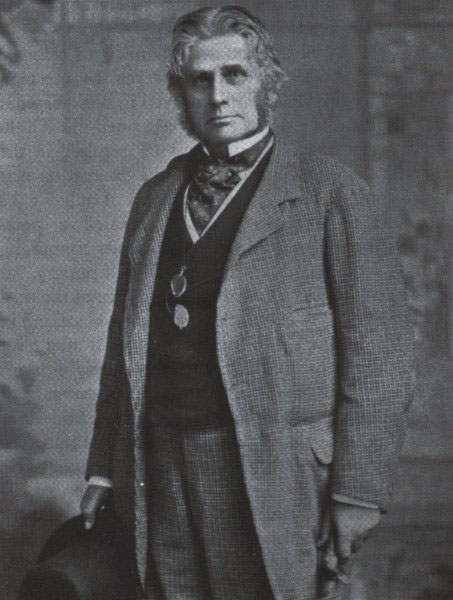<Back to Index>
- Archaeologist Augustus Henry Lane Fox Pitt Rivers, 1827
- Architect Giuseppe Valadier, 1762
- King of Spain and Portugal Philip III, 1578
PAGE SPONSOR

Lieutenant-General Augustus Henry Lane Fox Pitt Rivers (14 April 1827 – 4 May 1900) was an English army officer, ethnologist, and archaeologist. He was noted for his innovations in archaeological methods, and in the museum display of archaeological and ethnological collections.
Born Augustus Henry Lane-Fox at Bramham cum Oglethorpe, Wetherby, Yorkshire, he was the son of William Lane-Fox and Lady Caroline Douglas, a sister of George Douglas, 17th Earl of Morton. George Lane-Fox and Sackville Lane-Fox were his uncles. Educated at the Royal Military College Sandhurst and commissioned into the Grenadier Guards, Lane-Fox had a long and successful military career, primarily as a staff officer; he served in the Crimea as a lieutenant. He retired in 1882 as a Lieutenant - General. Two years before retirement, Lane-Fox inherited the estates of a cousin: Henry Pitt-Rivers, 6th Baron Rivers, and consequently the remainder of the Richard Rigby fortune. He thereafter adopted the surname Pitt Rivers in honour of his benefactor. Three notable descendants of Augustus are his grandson, the anthropologist and eugenicist, George Pitt-Rivers, his great-grandson, the anthropologist and ethnographer, Julian A. Pitt-Rivers, and his great-great-grandson, William Fox-Pitt, the equestrian. Another grandson was Michael Pitt-Rivers who gained notoriety in Britain in the 1950s when he was put on trial charged with buggery.
Pitt Rivers' interests in archaeology and ethnology began in the 1850s, during postings overseas, and he became a noted scientist while he was still a serving military officer. He was elected, in the space of five years, to the Ethnological Society of London (1861), the Society of Antiquaries of London (1864) and the Anthropological Society of London (1865). By the time he retired he had amassed ethnographic collections numbering tens of thousands of items from all over the world. Influenced by the evolutionary writings of Charles Darwin and Herbert Spencer, he arranged them typologically and (within types) chronologically. This style of arrangement, designed to highlight the evolutionary trends in human artefacts, was a revolutionary innovation in museum design. Pitt Rivers' ethnological collections today form the basis of the Pitt Rivers Museum which is still one of Oxford's leading attractions.
The estates that Pitt Rivers inherited in 1880 contained a wealth of archaeological material from the Roman and Saxon periods.
He excavated these over seventeen seasons, beginning in the mid 1880s
and ending with his death. His approach was highly methodical by the
standards of the time, and he is widely regarded as the first
scientific archaeologist to work in Britain. His most important
methodological innovation was his insistence that all artefacts,
not just beautiful or unique ones, be collected and catalogued. This
focus on everyday objects as the key to understanding the past broke
decisively with past archaeological practice, which had often verged on
treasure hunting. It is Pitt Rivers' most important, and most lasting
scientific legacy. Moreover his work inspired Mortimer Wheeler among others to add to the scientific approach of archaeological excavation techniques. Pitt Rivers created the Larmer Tree Gardens, a public pleasure garden, on the Rushmore estate near Tollard Royal in Wiltshire. From
1882 Pitt Rivers served as Britain's first Inspector of Ancient
Monuments: a post created by anthropologist and parliamentarian John Lubbock who
was married to Pitt Rivers' daughter, Alice. Charged with cataloguing
archaeological sites and protecting them from destruction, he worked
with his customary methodical zeal but was hampered by the limitations
of the law, which gave him little real power over the landowners on
whose property the sites stood.